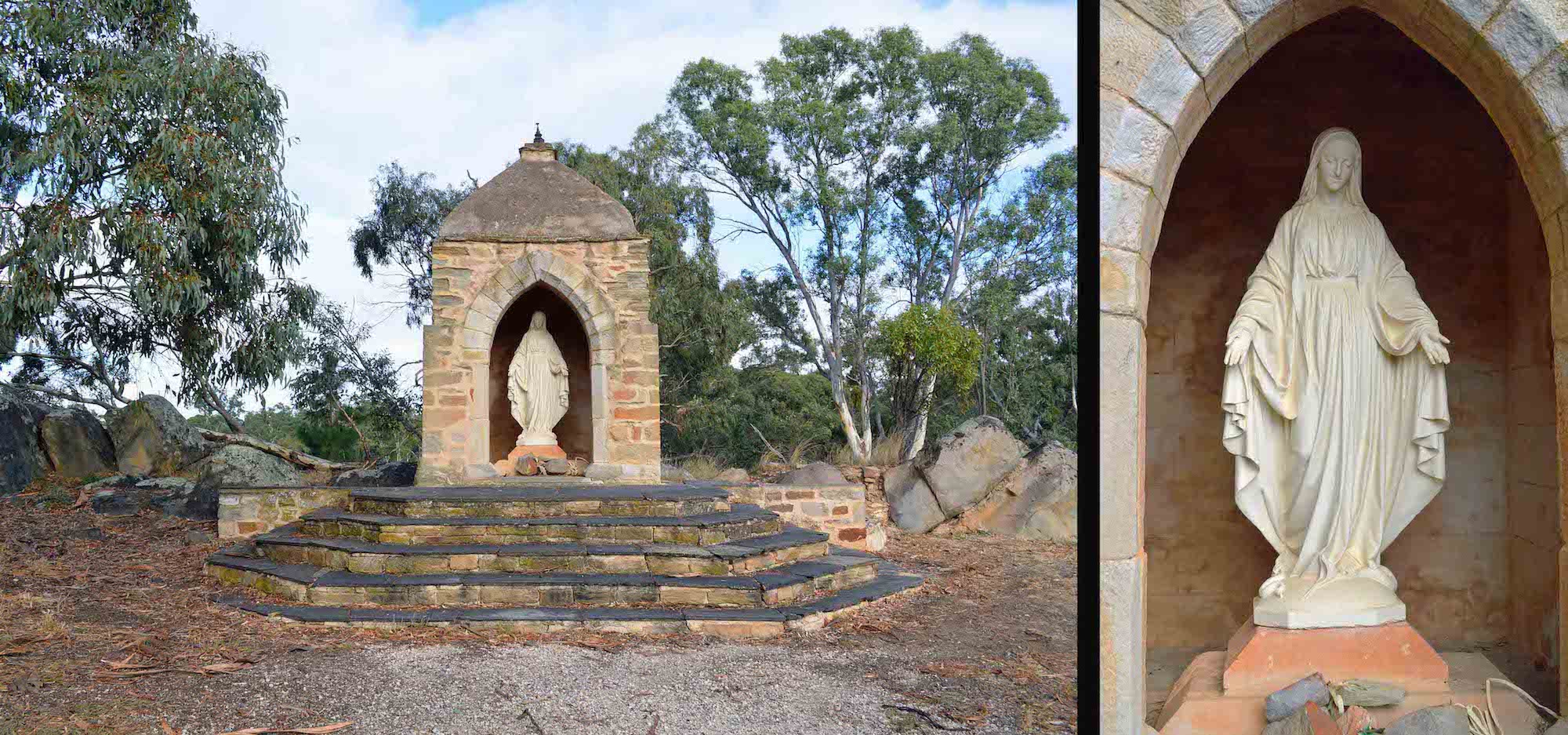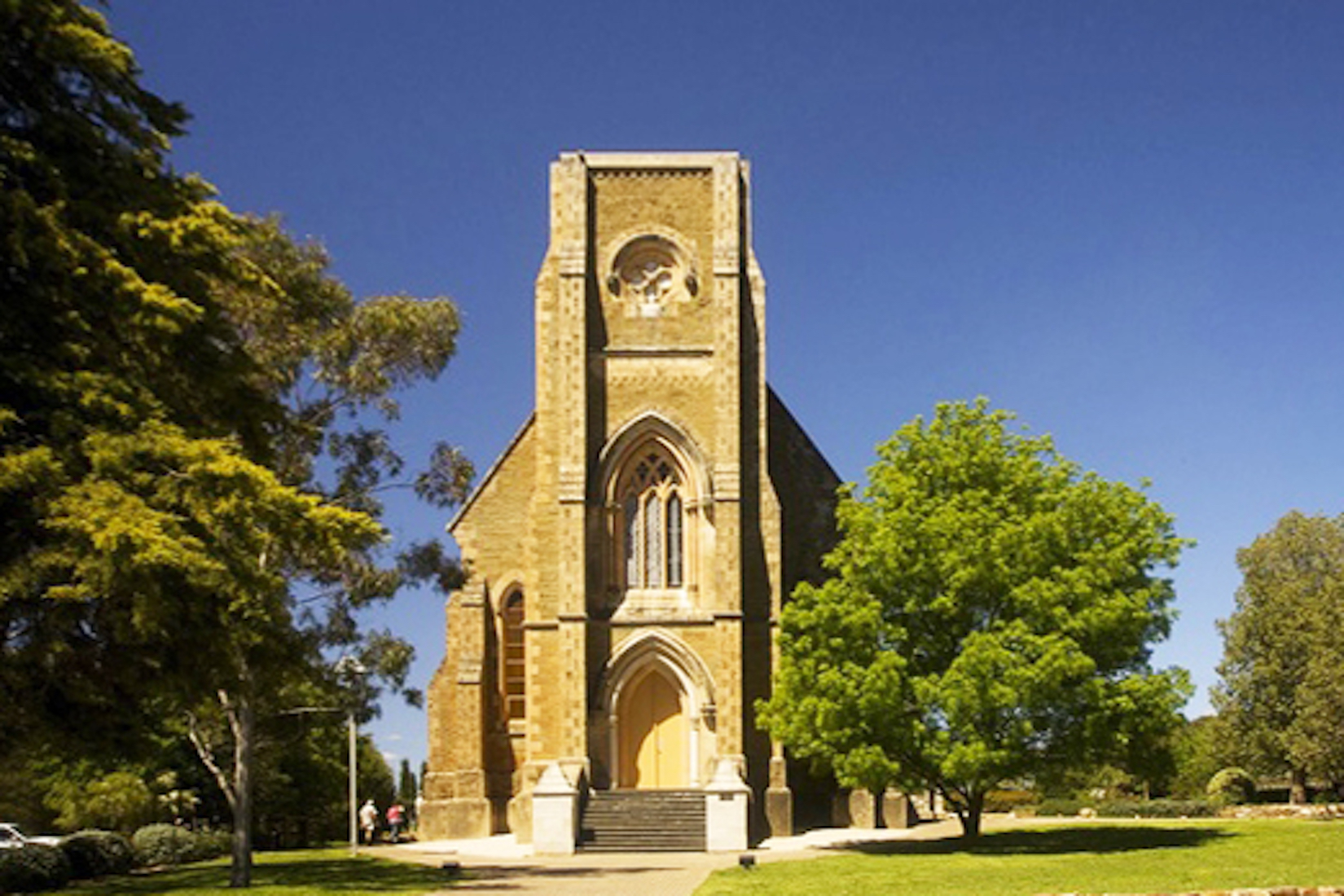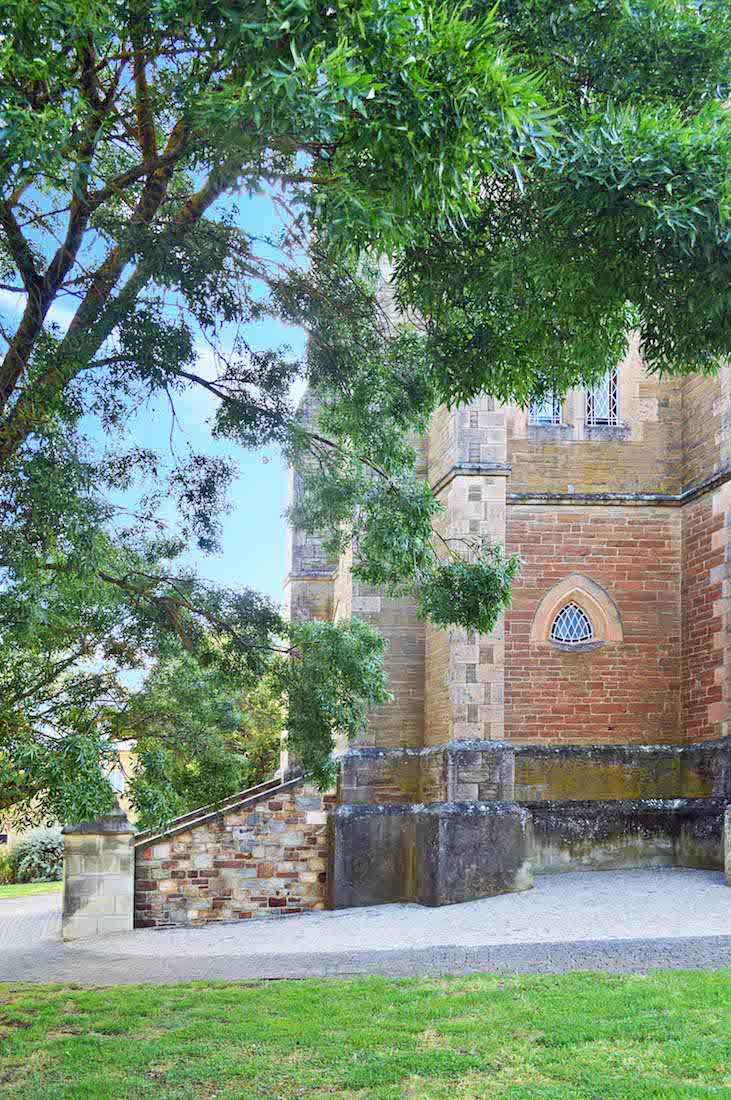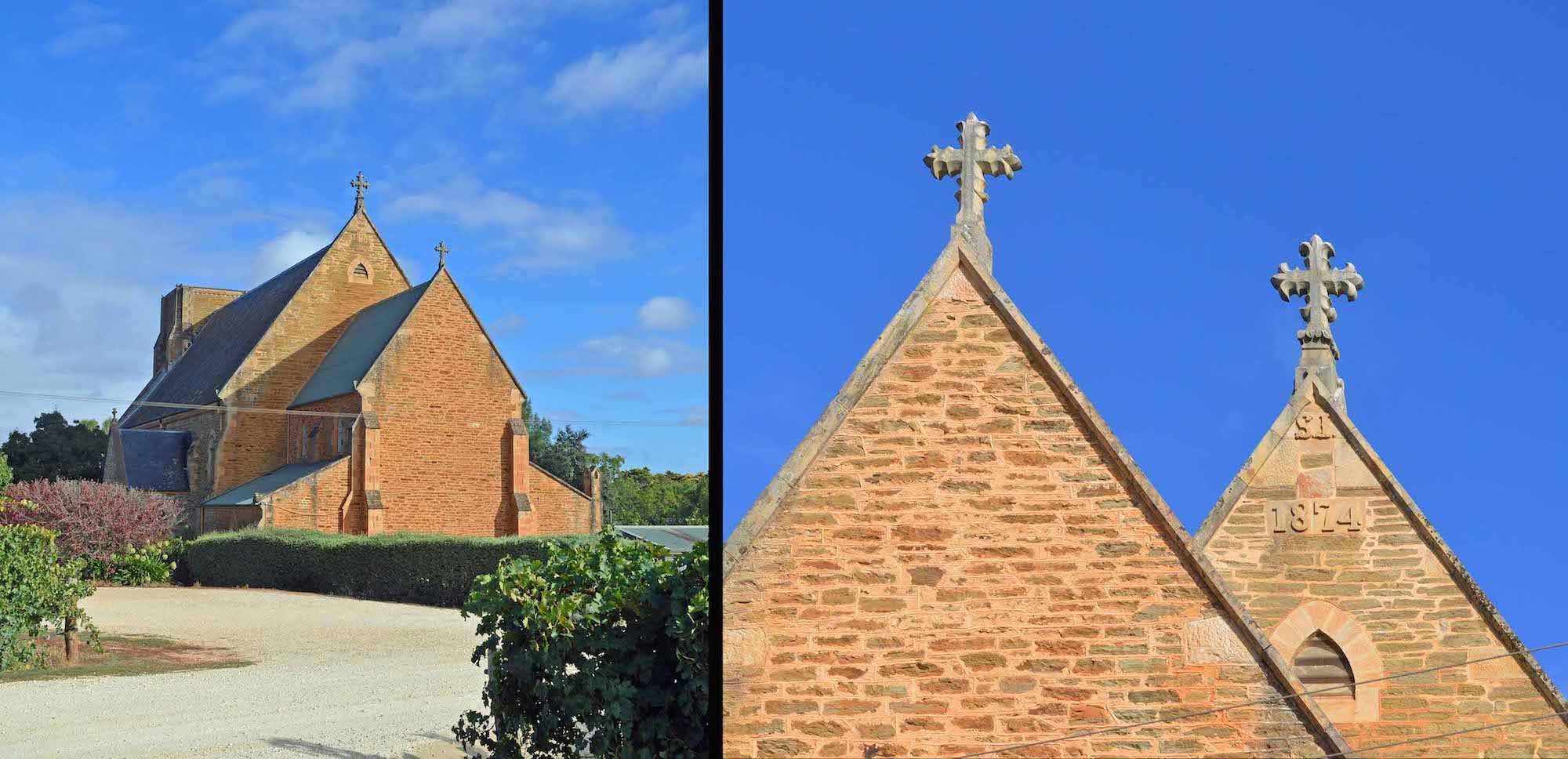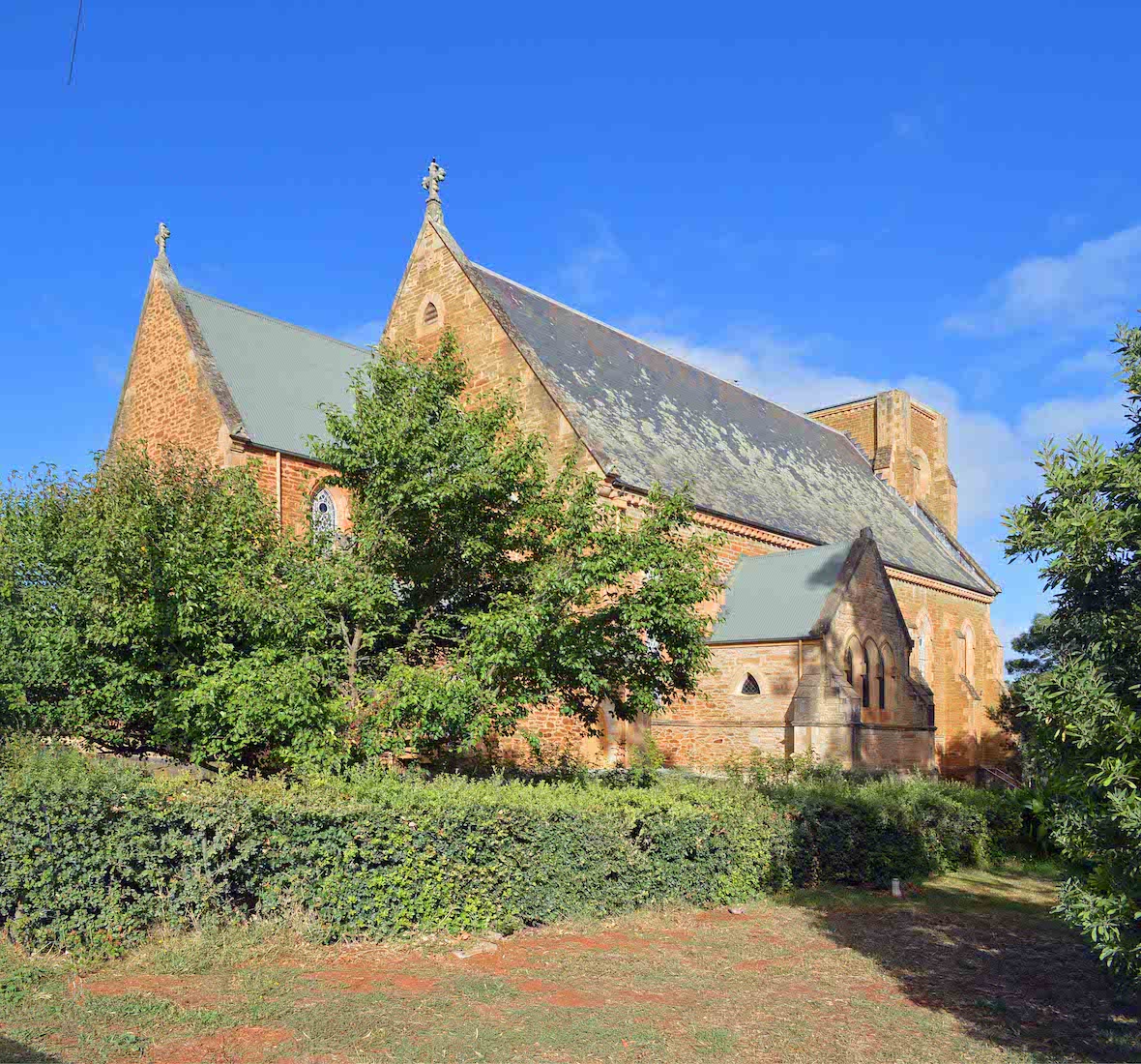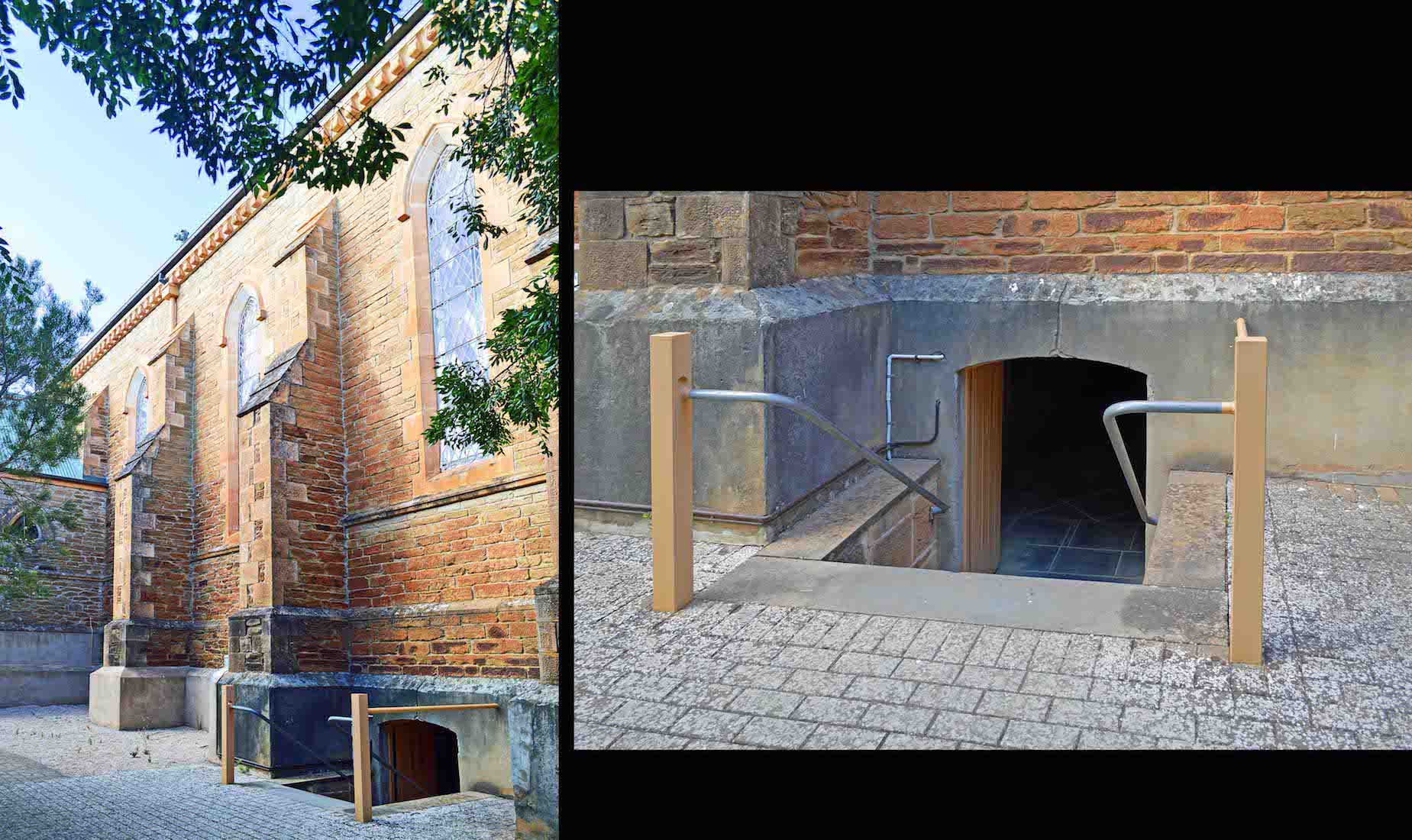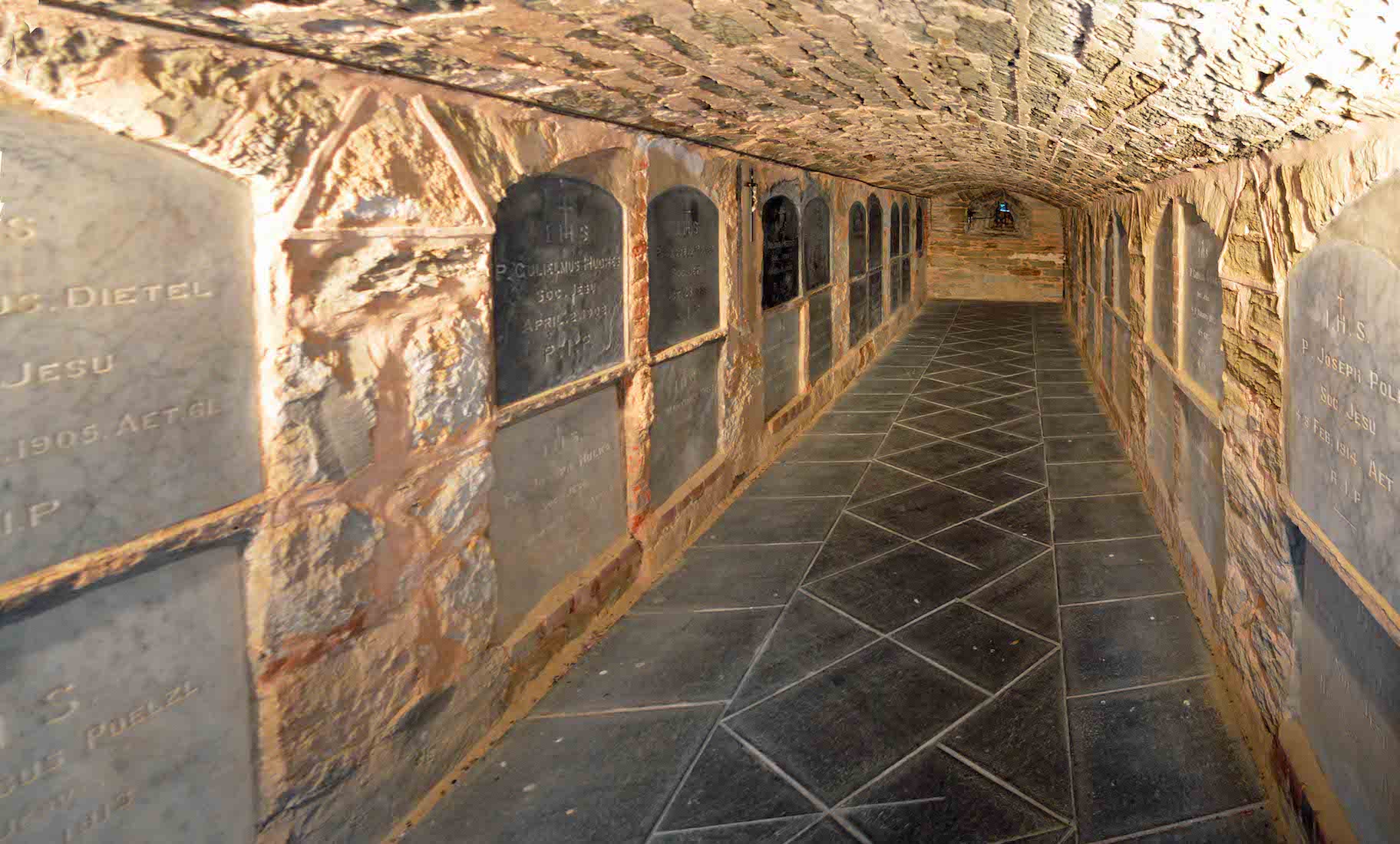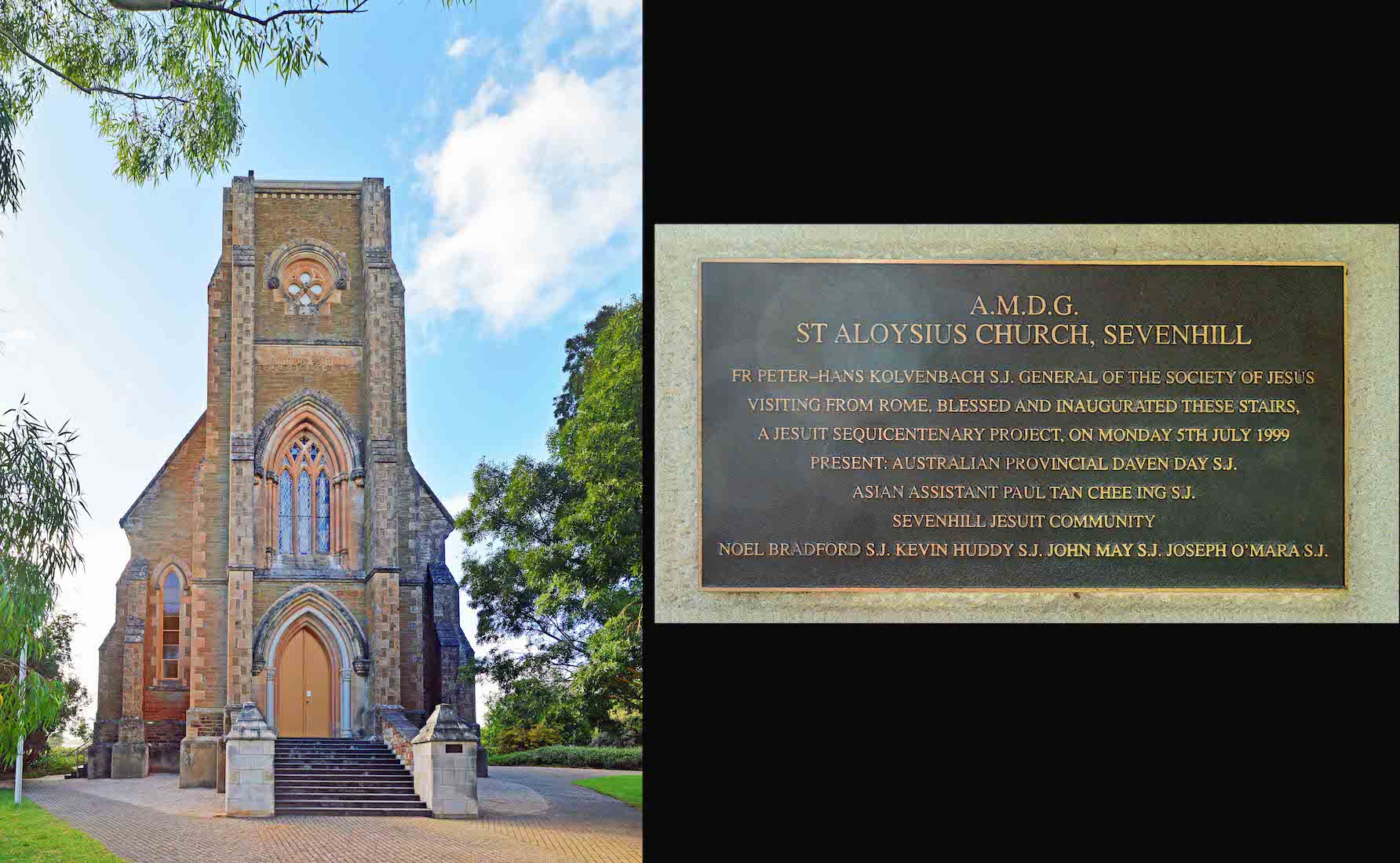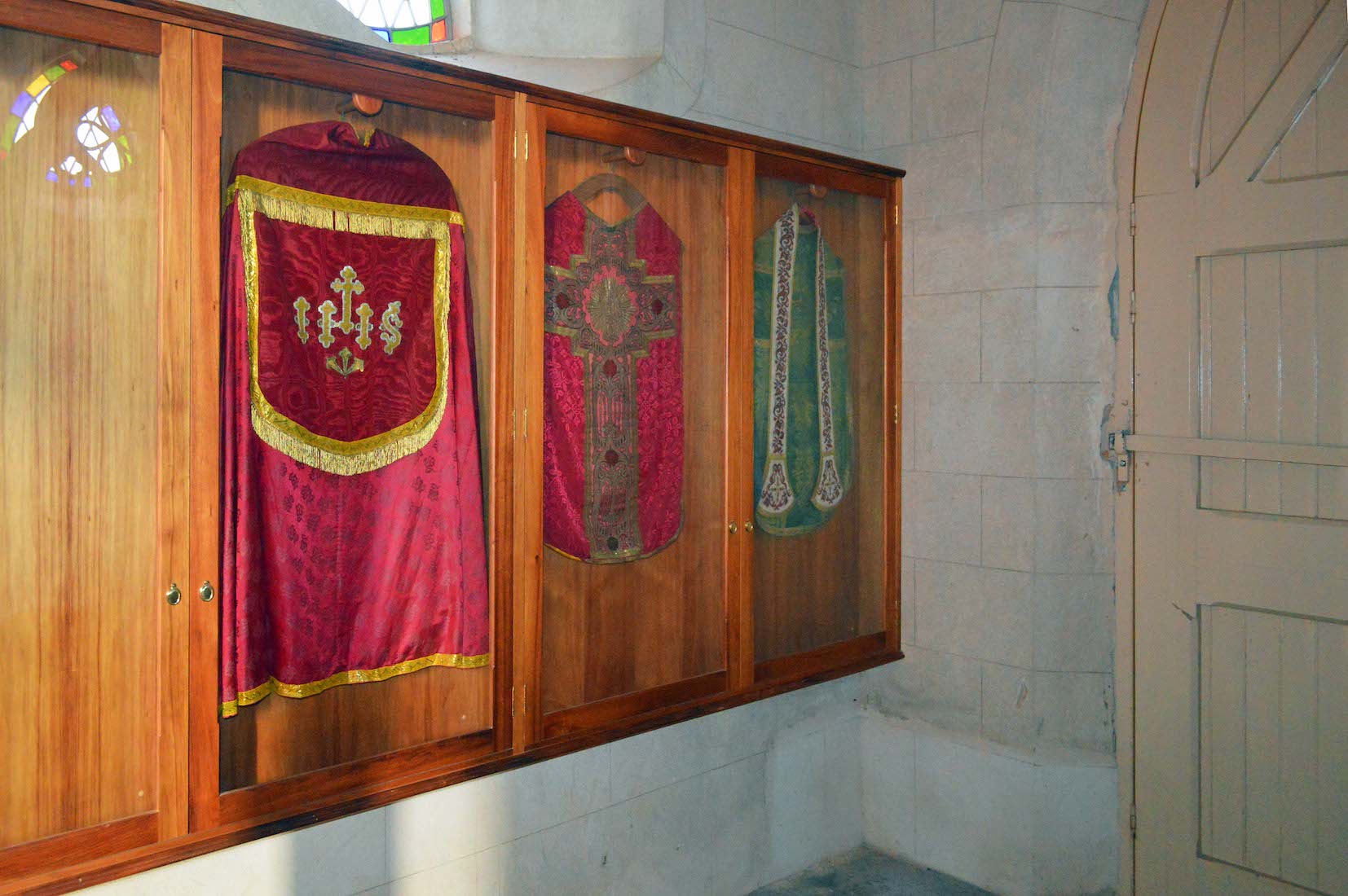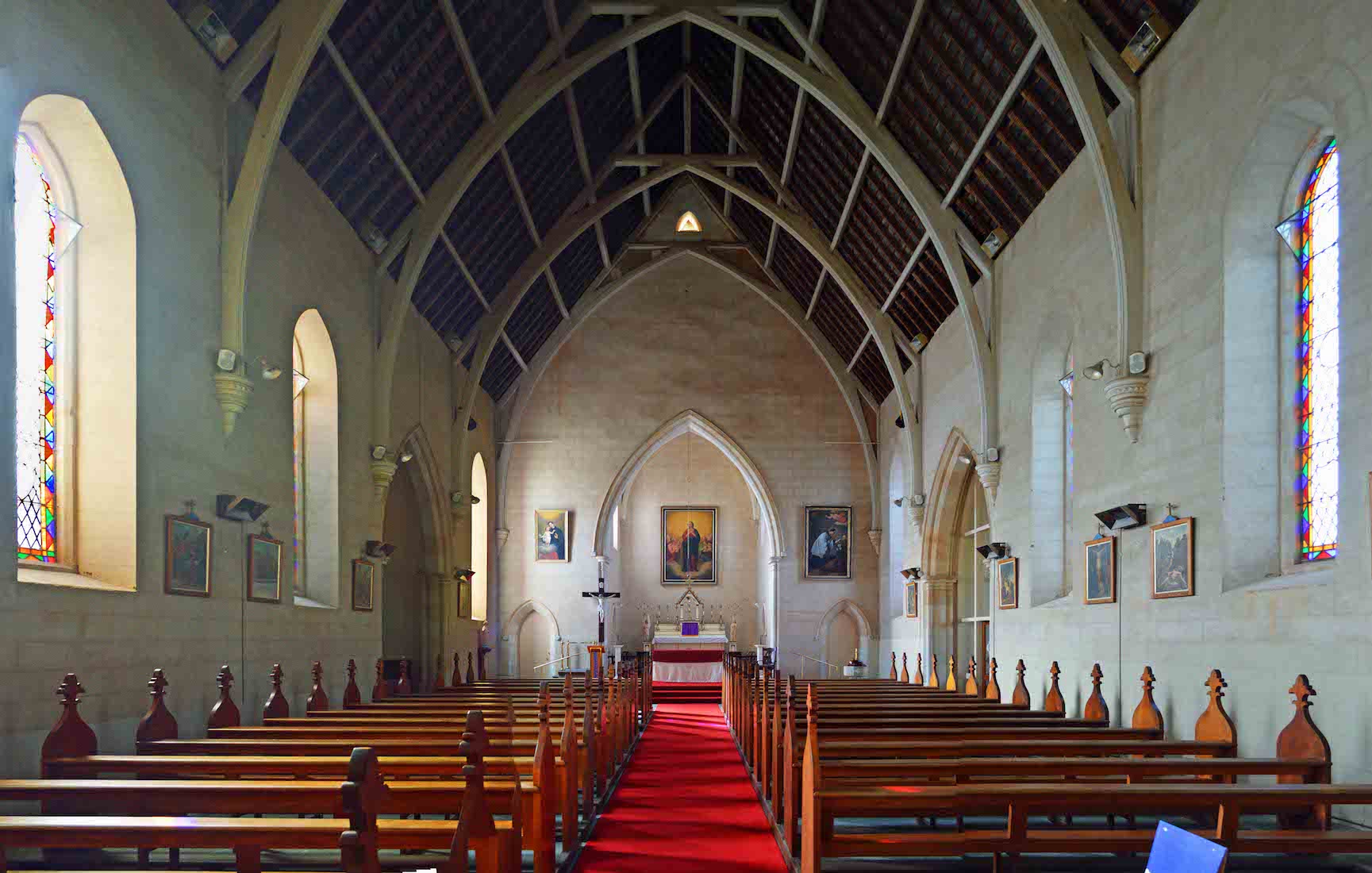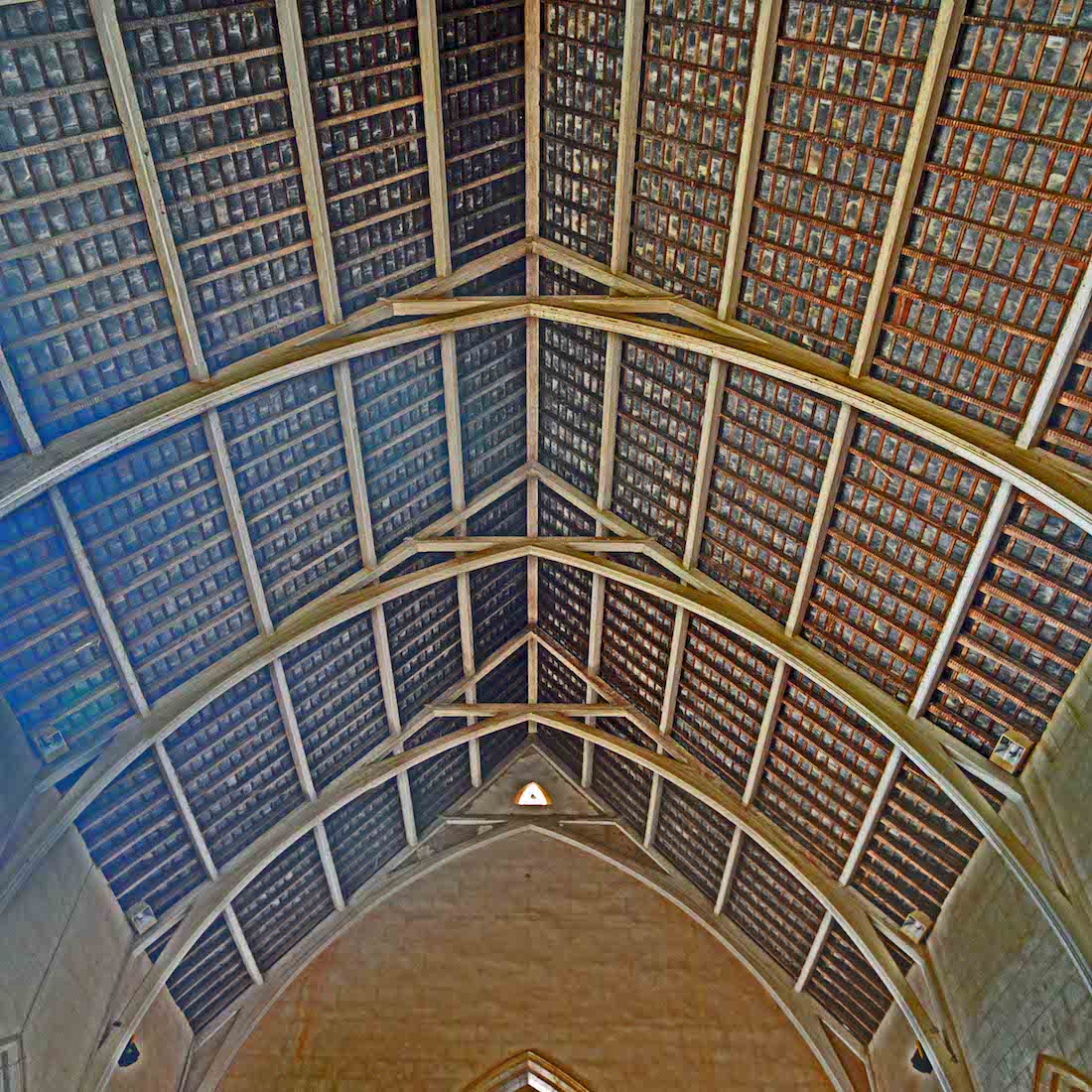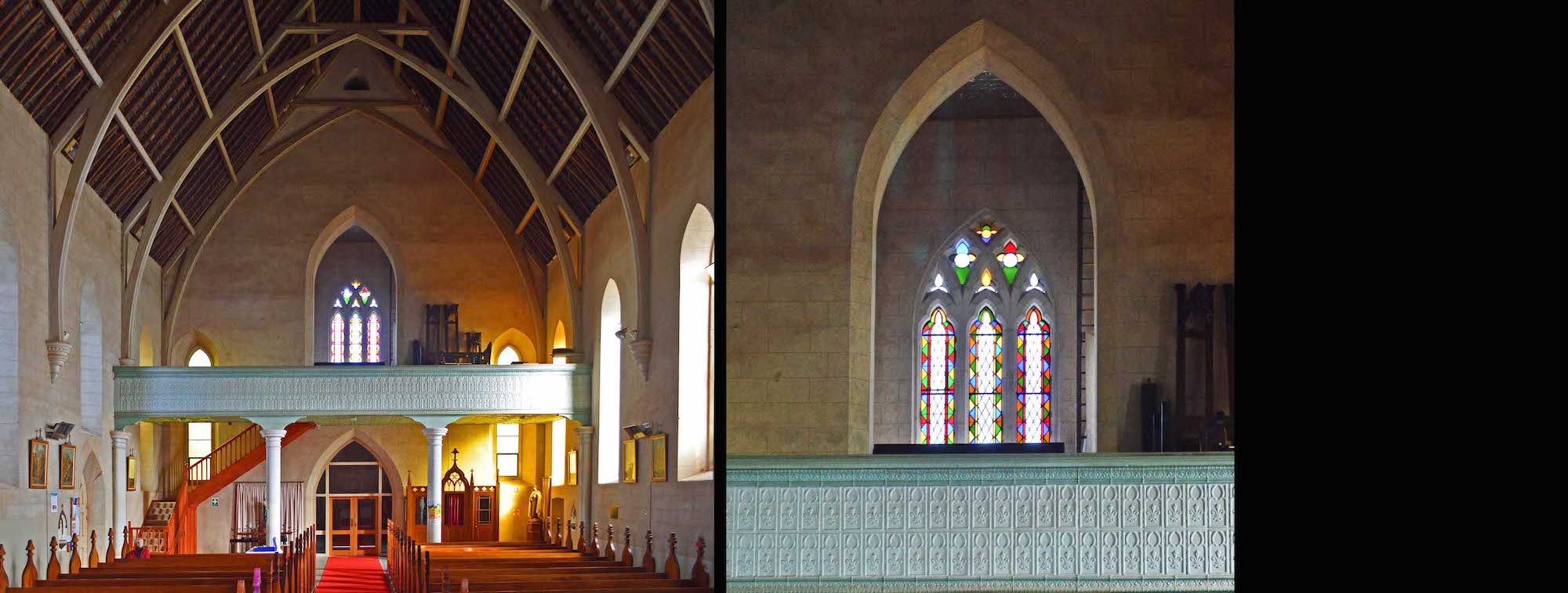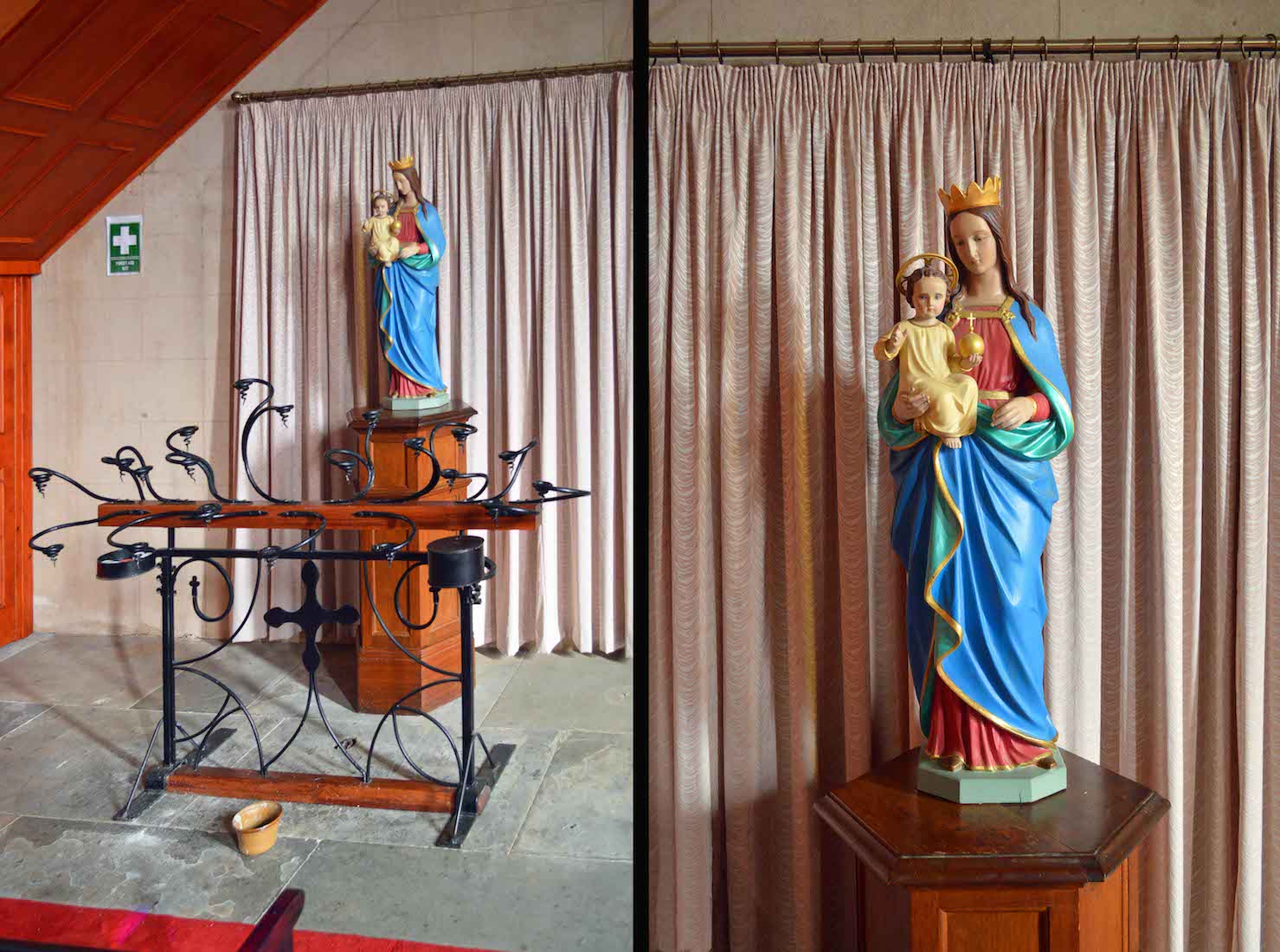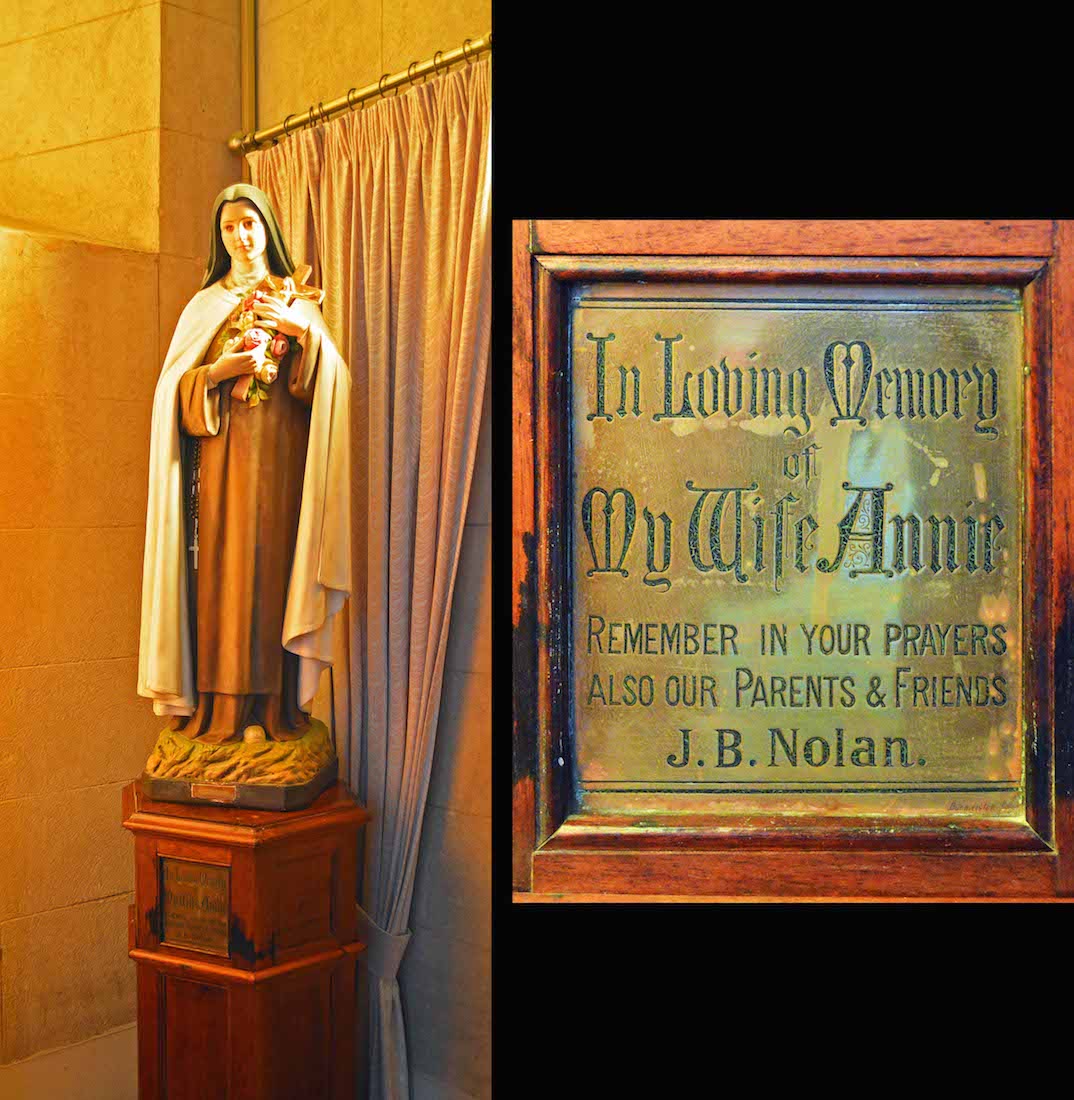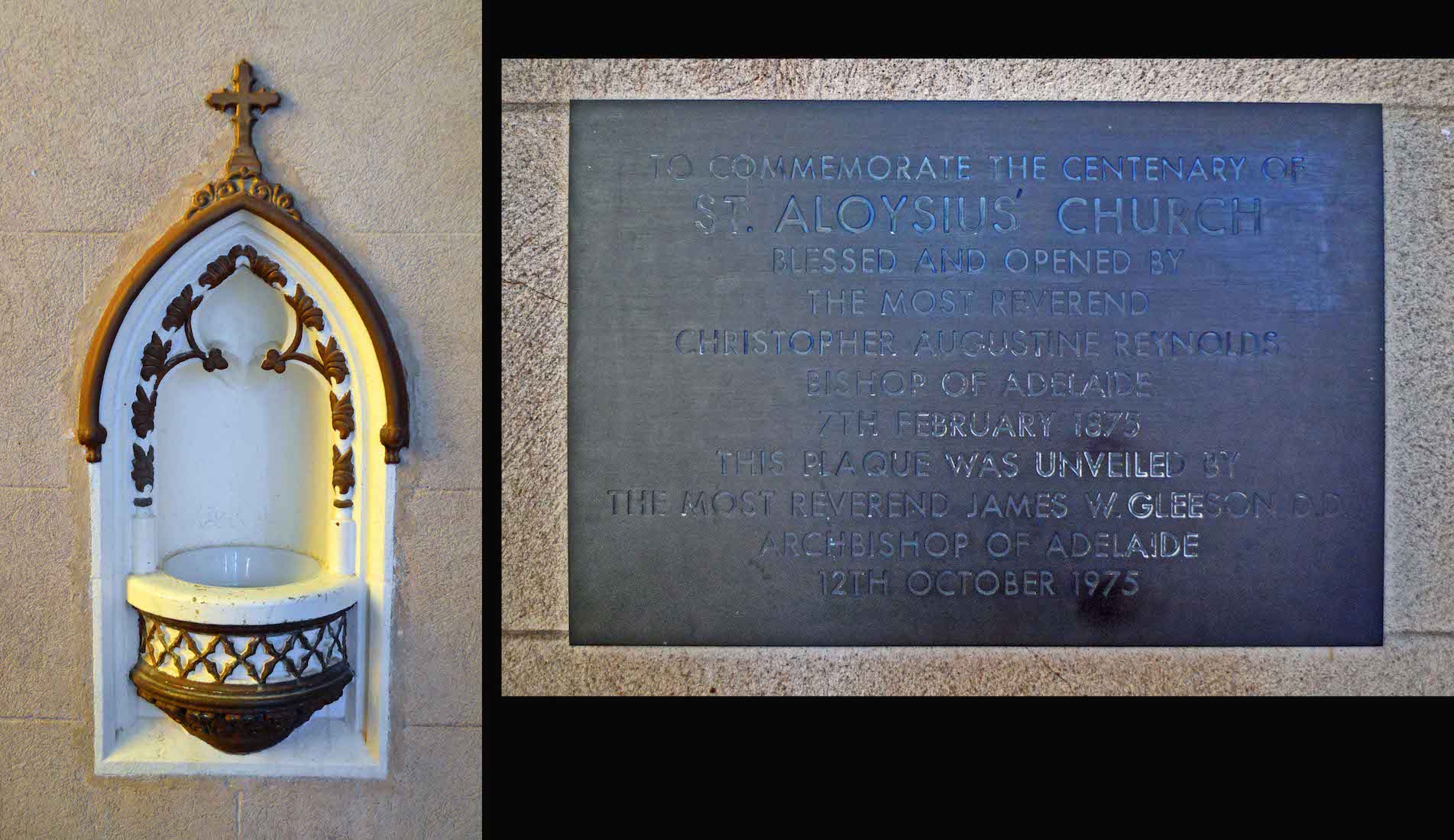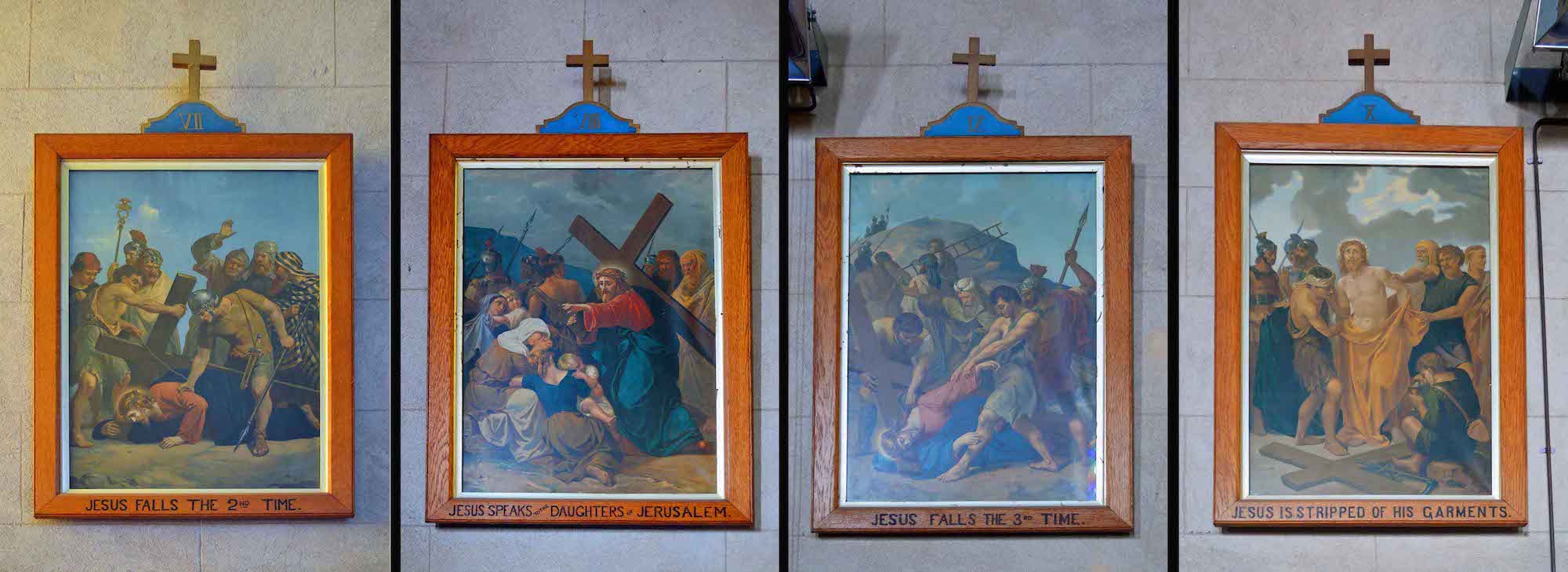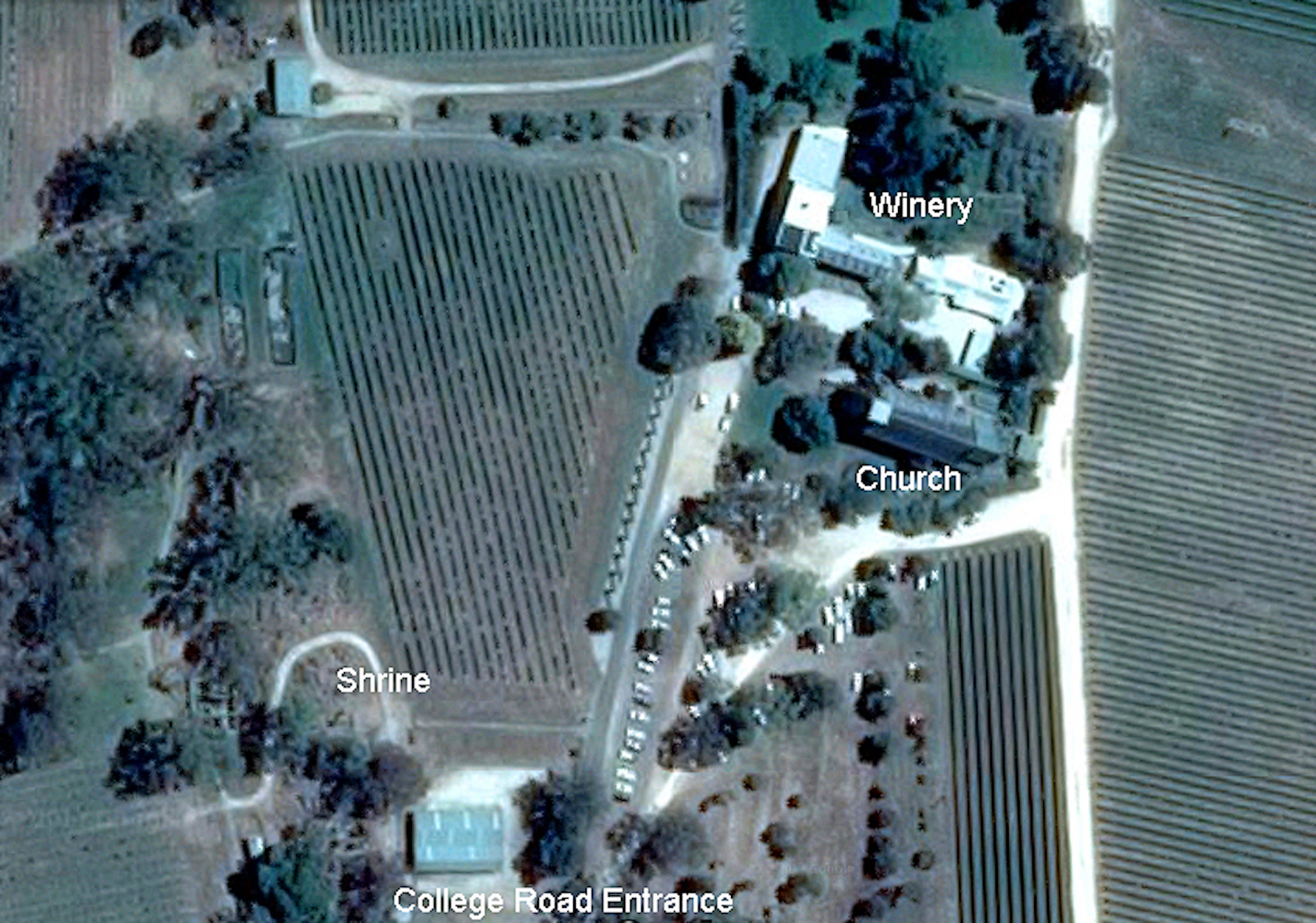
St Aloysius Church is located in the Sevenhill Winery, about 1 km east of the little town of Sevenhill. It is approached from the south past a shrine to the Madonna. The axis of the Church is almost due east-west, so we can identify our liturgical directions (East-West with capital letters) with the geographical east-west. The Church has a tower at the West end, and two small transepts.
2. SHRINE TO THE MADONNA
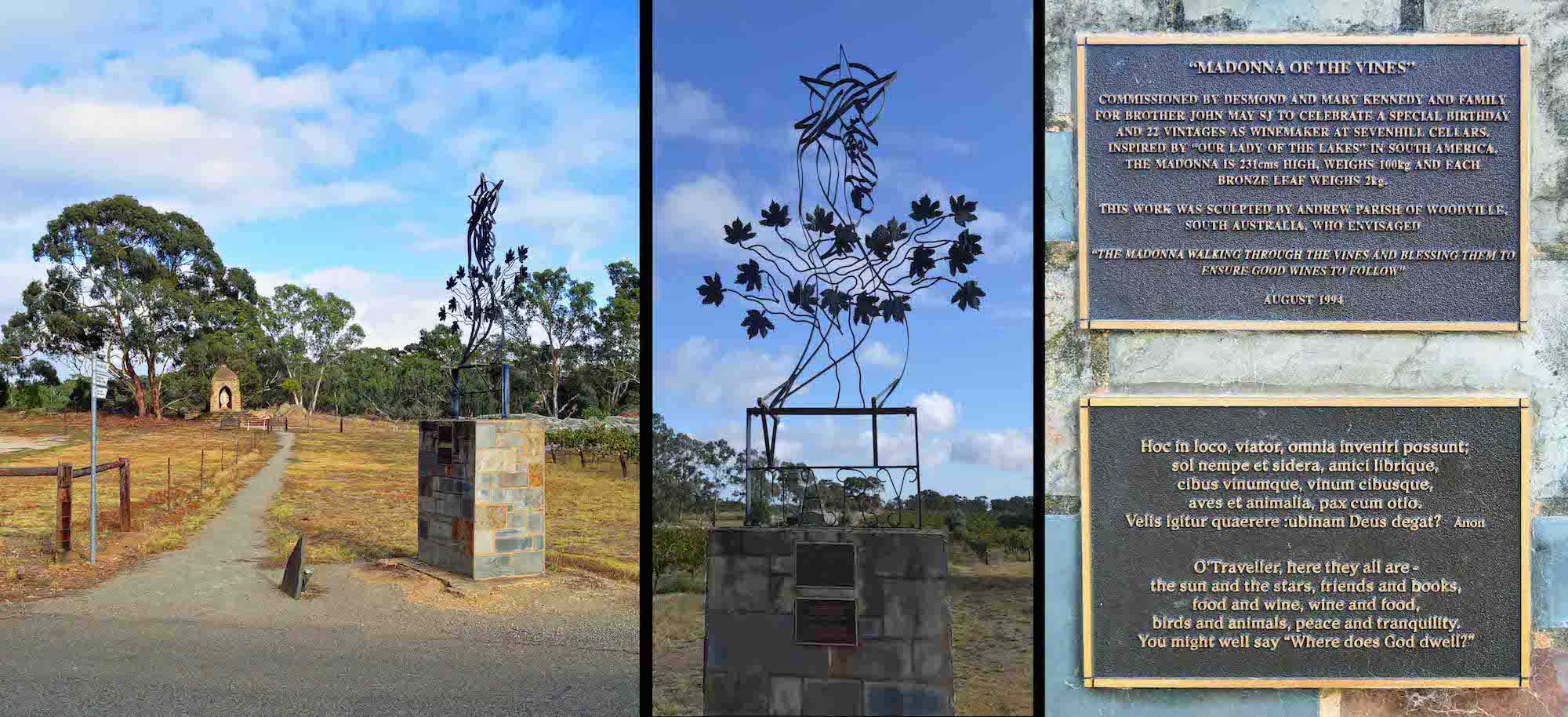
Sevenhill was the birthplace of the Jesuits in Australia after they arrived in Adelaide as chaplains to a group of Austrians that fled Europe to escape political and religious oppression. The Jesuits purchased 100 acres of land in 1851, naming it Sevenhill after the Seven Hill district of Rome. The path to the shrine is marked by a lovely sculpture by Andrew Parish, showing the Madonna walking through the vines.
3. THE SHRINE
At the end of the short path we find Mary standing within a stone shelter. • The Jesuits of Sevenhill planted vines, built a church and opened a college, which became the first Catholic boys’ school in the colony and also served as a seminary for the training of priests. Today, next to the Church stands a Centre of Ignatian Spirituality – a place of contemplation and reflection.
4. CHURCH WEST WALL
We walk across to the front of the Church. • St Aloysius’ Church has served the Parish of Sevenhill since its completion in 1875. Mass is conducted at St Aloysius' each Saturday at 6pm. A magnificent example of Gothic Revival architecture, the historic church is a striking building set among the vines and gardens of Sevenhill Cellars. Built from local stone, it features a slate roof, and nearby Mintaro slate floors.
5. FRONT STEPS
We shall see shortly that these steps are a relatively recent addition, having been added in 1999. Notice the little Reuleaux triangle window in the bottom of the tower. We shall begin our exploration of this Church by walking around the outside in an anticlockwise direction.
6. SOUTH WALL
The side wall is supported by solid buttresses. Near the Eastern end the Southern transept extends out – at least according to the Church literature. We shall find that this is the Lady Chapel, and I am interested to know at what stage a side chapel becomes a transept! During the week, entry to the Church is through these side doors.
7. TRANSEPT PLAQUE
Transept or not, it is clear that this is a very recent addition to St Aloysius, being completed in 1997.
8. SOUTHEAST VIEW
From here one can stand amongst the vines and survey the Church. At the apex of each gable is a budded cross, and near the apex of the nave gable is inscribed ‘SJ 1874’. The date tells us when the gable was erected, and the SJ stands for ‘The Society of Jesus’. The Society of Jesus (S.J.) is a Roman Catholic order of religious men (Jesuits) founded by St. Ignatius of Loyola. It is noted for its educational, missionary, and charitable works, was once regarded by many as the principal agent of the Counter-Reformation. Later it was a leading force in modernizing the church.
9. NORTHEAST VIEW
From this angle we see the stump of the tower and the North transept. Again we might query the transept name: inside this is the Chapel of the Sacred Heart.
10. CRYPT ENTRANCE
The crypt has its entrance outside the Church on the Northern side, and is unique for a parish church in Australia.
12. WEST TOWER AND STAIRS
This is the most imposing view of St Aloysius. The plaque can be seen on the pillar at the right of the steps. It tells us that the stairs were blessed and inaugurated in 1999 by Fr Peter-Hans Kolvenbach SJ, General of the Society of Jesus, and that the stairs were a sesquicentenary project.
13. WEST PORCH
On the South wall of the entry proch is this cabinet containing various ceremonial ecclesiastical garments. The IHS (the first three letters of the name ‘Jesus’ in Latinized Greek) together with the central cross is a symbol used by the Jesuits.
14. NAVE
So we come to the nave. Initial impressions: a very large, high space, a central aisle carpeted in red down to the sanctuary, rows of pews with prominent crosses on the ends, Stations of the Cross lining the walls, and many gothic arches – even supporting the roof. A peaceful, reflective space ... .
15. NAVE ROOF
The slate tiles are supported by a light timber lattice, which in turn is supported by timber beams held in place by the gothic arches. This construction adds greatly to the feeling of spaciousness in the nave.
16. WEST NAVE WALL
The dominent feature looking West is the balcony with stairs at the left. A small organ is located to the right. At centre a gothic archway leads through to the upper tower room with a three lancet window. There are several items of interest below the balcony including an altar to Mary at left and a confessional at right.
17. ALTAR TO MARY
We come to the statue of Madonna and Child. The altar stand in front is reminiscent of the sculpture leading to the outdoor shrine. Mary wears blue as a sign of purity, and is crowned Queen of Heaven. The Child Jesus carries an orb and Cross, symbolizing his power over the world.
118. ST THÉRÈSE
On the North side is a statue of St Thérèse. The impact of The Story of a Soul, a collection of her autobiographical manuscripts, printed and distributed a year after her death to an initially very limited audience, was great, and she rapidly became one of the most popular saints of the twentieth century. The statue was given in memory of Annie Nolan.
19. STOUP AND PLAQUE
The stoup is a container for holy water. The large dark plaque nearby dated 1975, commemorates the centenary of the St Aloysius Church.
20. STATIONS OF THE CROSS
There are 14 Stations of the Cross lining the nave walls. These depict the key events of Jesus’ journey to the Cross, and are used particularly over the Easter period as an aid to meditation.


